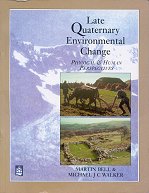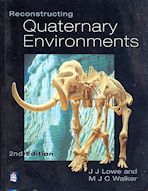Late Quaternary Environmental Change focuses on both natural and anthropogenically-induced changes that have occurred in the landscape of the temperate zone during the closing stages of the last glacial and over the course of the present interglacial. It begins by studying the evidence for environmental change, followed by a discussion of the patterns and causes of both long-term and short-term climatic change, and the effects of climatic change on the biotic and abiotic components of the landscape. The human dimension is explored through an examination of the impact of environmental change on people, the effects of people on the landscape and the increasing influence of human activity on climate. This section of the book adopts an ecological approach to archaeology in which the interactive relationships between people and the environment are discussed against a background of climatic change.
This broad-ranging text is unique among the literature available in that it reflects both the spatial and temporal interactions between the people, environment and climate of the recent geological past. Examples are taken from a wide range of sources in the earth and archaeological sciences. The text has been written in a style that is detailed yet highly readable and there are copious illustrations throughout.
Late Quaternary Environmental Change will be essential reading for students in a number of disciplines including archaeology, environmental science, geography, geology and history and will prove to be a useful addition to the bookshelves of professional archaeologists.

